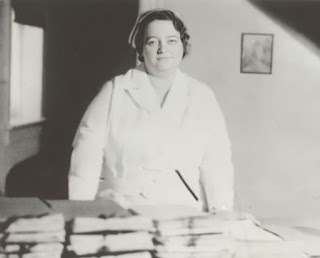What is Essiac Tea?
Essiac. What a funny-looking word! Who made that up, and what in the world is “essiac” tea anyway?
This blend of tea has its origins in a mining community in Canada. A nurse by the name of Rene Caisse (pronounced reen case) was working there in the early 1900s. She found that a miner’s wife, who had been suffering from a serious illness, was seemingly cured after taking an old Native American herbal recipe given by an “old Indian medicine man.”
Caisse experimented with this herbal blend, and she soon found that it seemed to promote wellness in her patients. Many of her patients reported feeling more healthy, and some living with terminal illness reported that the tea made their condition more bearable.
Nurse Caisse gave the formula the name essiac (pronounced ess-ee-ack), which is her own last name spelled backward.
So what’s in Essiac tea?
Many companies out there include all
sorts of herbs in their blend. We at Ojibwa Tea of Life use the original,
4-herb recipe. Some of you may have heard that Nurse Caisse used more herbs
than that; and while it’s true that she experimented with adding other herbs,
she kept coming back to the same 4-herb formula as the most efficacious. That formula is what we use today.
These 4 herbs are:
- 35% Sheep Sorrel (leaf, stem, seed and 20% root)
- 54% Burdock Root (and seed)
- 9% Slippery Elm inner bark
- 2% Turkey Rhubarb root
Each herb by itself has many wonderful health-enhancing properties. We’ll look at each one in detail in future posts.
Herbology 101 tells us that when herbs are brought together into a formula, they become something more than the sum of their parts. They enhance each other and work together, providing more health benefit than if they were taken separately.
Essiac tea is our foundational product. While we offer several other herbal and natural products to promote your health, essiac is our crown jewel. Our company name, Ojibwa Tea of Life, comes from the Ojibwa (or Ojibwe, also known as Chippewa) – a nation of several Native American tribes who lived in the region of the great lakes, and the source of the essiac recipe.

.png)
.png)
.png)
Comments
Post a Comment